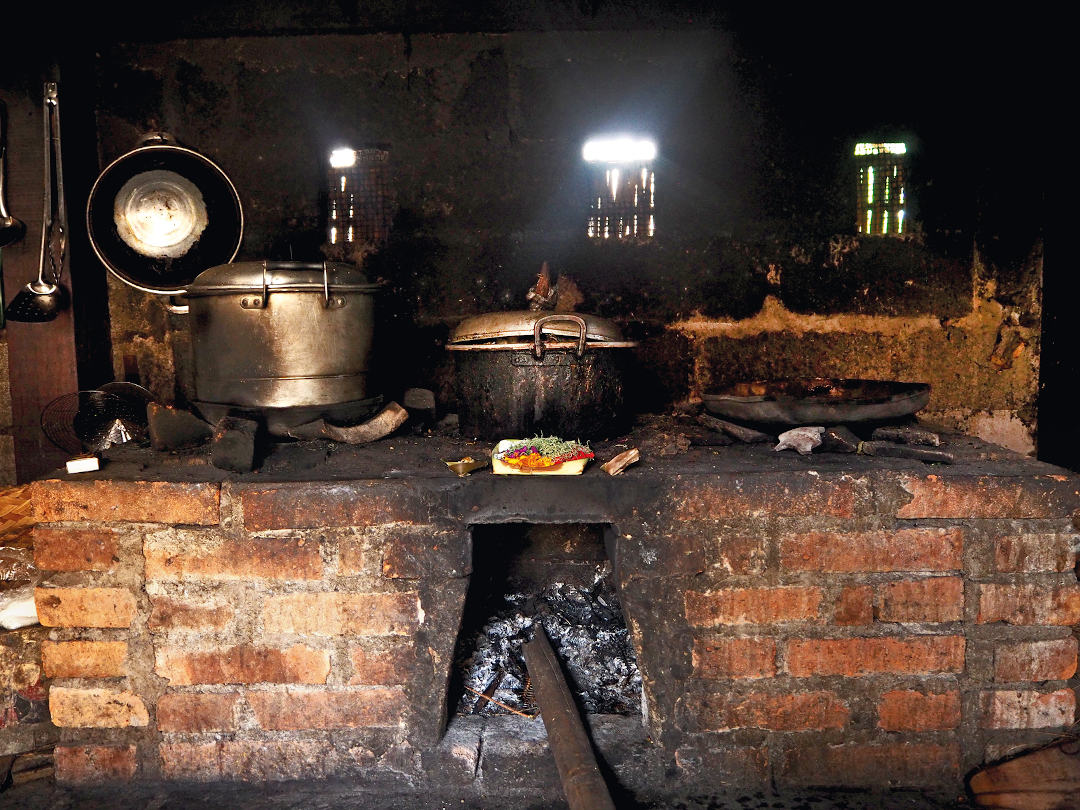Paon: The Philosophy of the Balinese Kitchen
In Bali, the kitchen is more than just a place to cook. It is an integral component of the Balinese compound, imbued with philosophy and age-old traditions. You would expect a cultural heritage as dynamic as Balinese cuisine to have its ancient recipes retained on tangible means. However, unlike other traditions and customs in Bali,
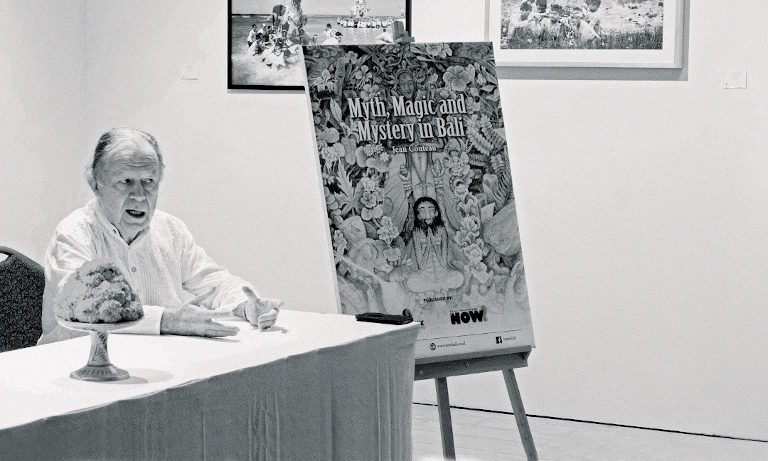
The Idea of Morality in Balinese Culture
Journalist Eric Buvelot and socio-ethnologist Jean Couteau have recorded 20 hours of discussion about changes that have happened in Bali since the 70’s. The conversation was structured and segmented according to many different aspects of Balinese life, mostly from a socio-historical perspective, to trace all the overturning in Balinese mores since 50 years, when modernity
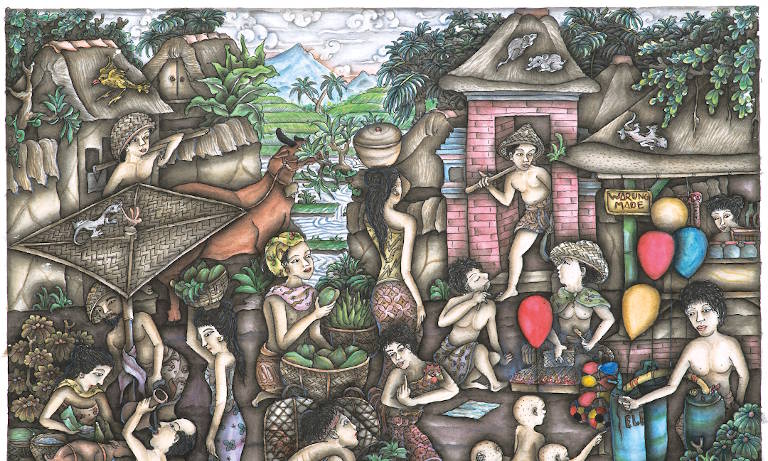
Bali’s Local Market on Canvas
Local markets are a great source of inspiration for painters in Bali and, as contributor Bruce Granquist explains, these bustling scenes become all the more interesting when painted in the intricate and detailed form of the Batuan painting style. Daily Life Everyday life of Bali, both traditional and contemporary, is a rich source of visual
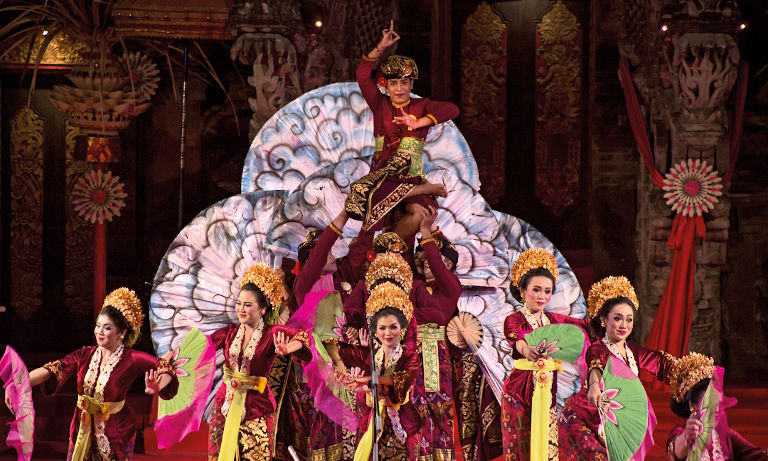
Sandya Gita Kotamaning Bayu
A loud cheer erupted as the master of ceremony completed his introduction for the next performance. It was an exciting evening at the Bali Art Festival, as the dance troupe of Badung regency was in a final, head-to-head battle with the representatives of Jembrana regency. A senior lady sat next to me, complementing the previous
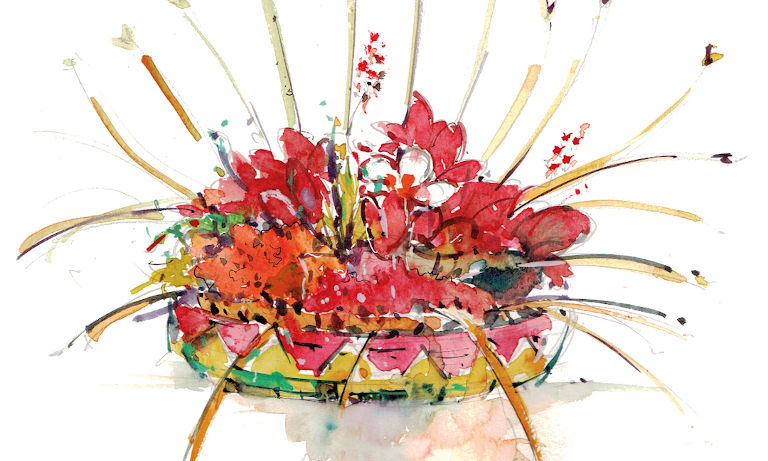
Canang Sari : Bali’s Daily Offering
Found on almost every street corner, temple, beachfront, office space, local market and even Bali’s most modern lifestyle establishments, the canang sari is the most pervasive form of offering on the island. Visitors will often watch in awe as the Balinese Hindu gracefully present the beautifully prepared canang sari, wafting burning incense soon after, but
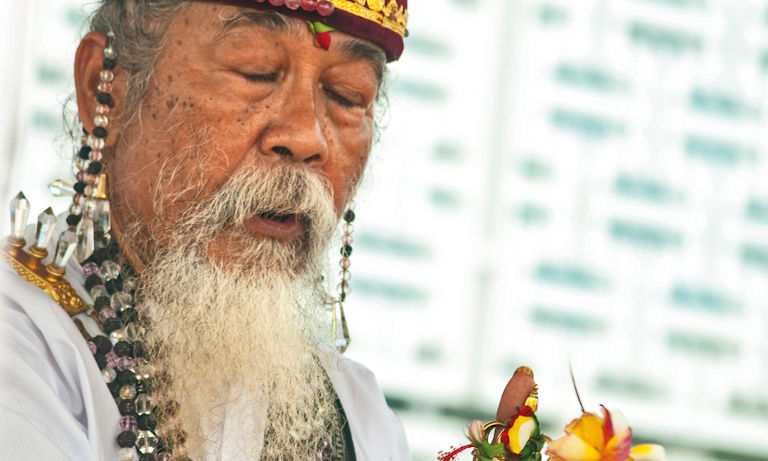
Madiksa: A Priest’s Second Birth
To become a Balinese Hindu high priest, or sulinggih, prospective priests must first go through the madiksa ritual. Some refer to it as a ‘death ritual’, as for the priest to be reborn as a new, cleansed man or woman, he or she must first “die”. A prerequisite to become a Catholic priest is being
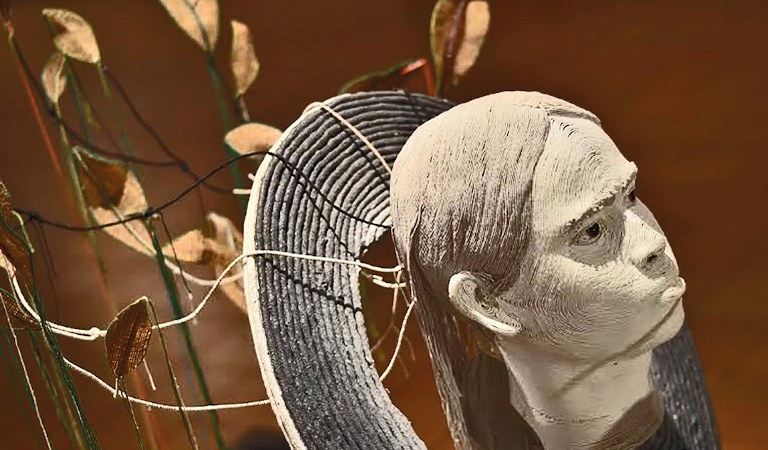
Wayan Arnata: Traditional Practices Fused with Contemporary Ideas
Balinese artist Wayan Arnata first came to my attention in June 2013 in the landmark exhibition ‘Irony in Paradise’ by the collective Sanggar Dewata Indonesia (SDI) at the Agung Rai Museum of Art (ARMA) in Ubud, Bali. ‘Nike Barong’ 2013, Arnata’s mixed media reflection upon the changing nature of the Balinese identity depicted the iconic
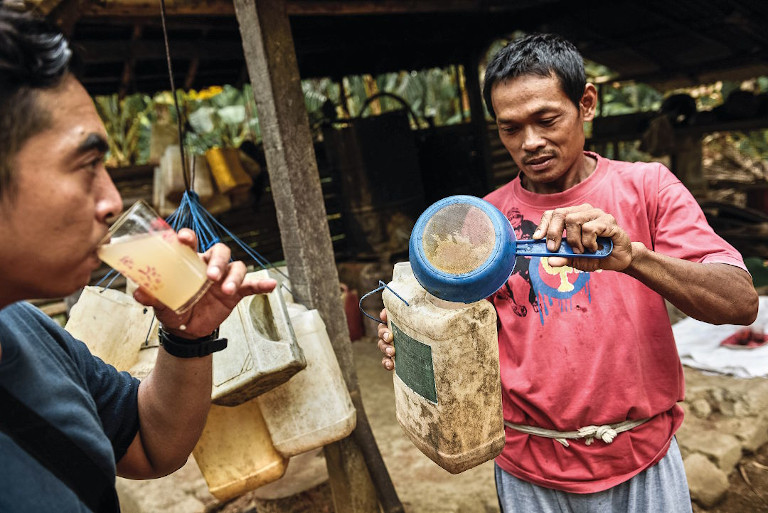
Arak For Life
In Bali, ’arak’ isn’t just an ordinary traditional spirit, but a means of religious tradition as well as the daily livelihood of its farmers. One of the traditional producers are in the village of Tri Eka Buana, Karangasem regency. 336.5 hectares rich with coconut trees, which are considered to trees of blessings, as many parts
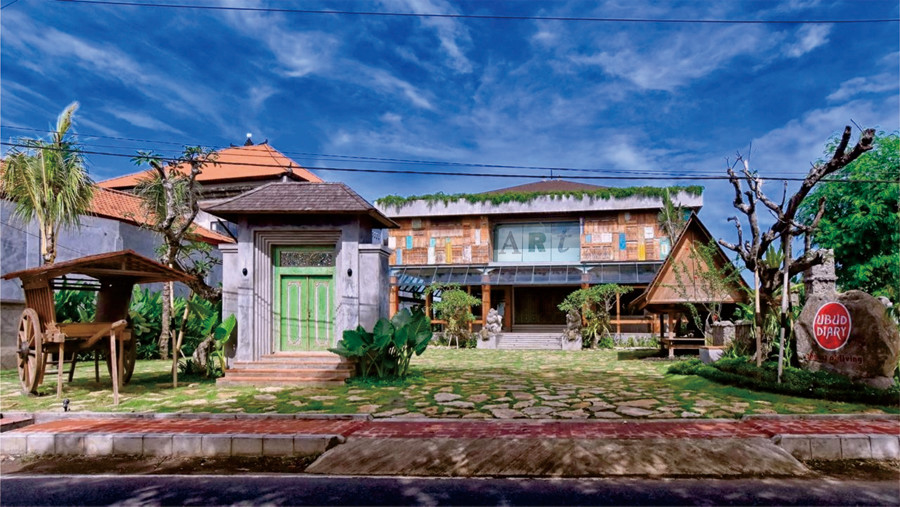
Ubud Diary : Bali’s Newest Art Gallery Showcasing the Ubud Style
A new art gallery and cultural landmark, Ubud Diary, has opened in Lodtunduh – just south of Ubud – presenting a collection predominantly exhibiting paintings of the Ubud style. Ubud Diary held its grand opening on the 30th of November, 2019, coinciding also with a book launching of ‘Ubud Diary: Celebrating the Ubud School of
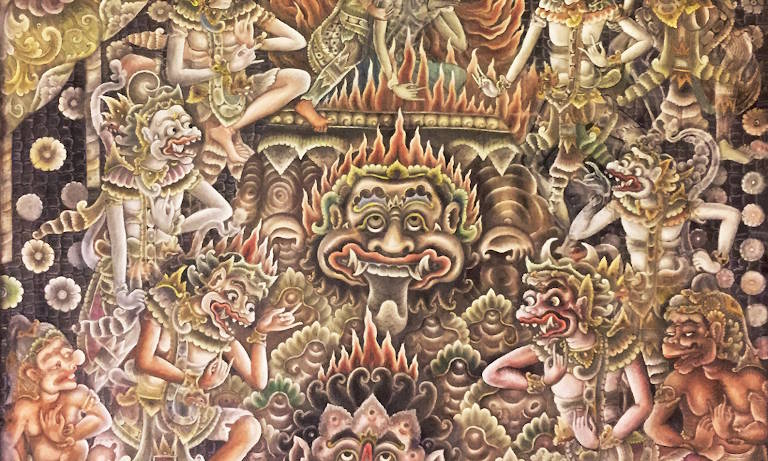
Widow Sacfrifices and other Suicides in Bali
It is a mistake to think that only bearded men with gleaming eyes seek ‘paradise’ by blowing themselves up in the middle of a crowd. Like it or not, Bali too has its own traditions of horror-inspired paradise seekers. Let us give it a look. Widows’ Sacrifice The most famous of these traditions relates to
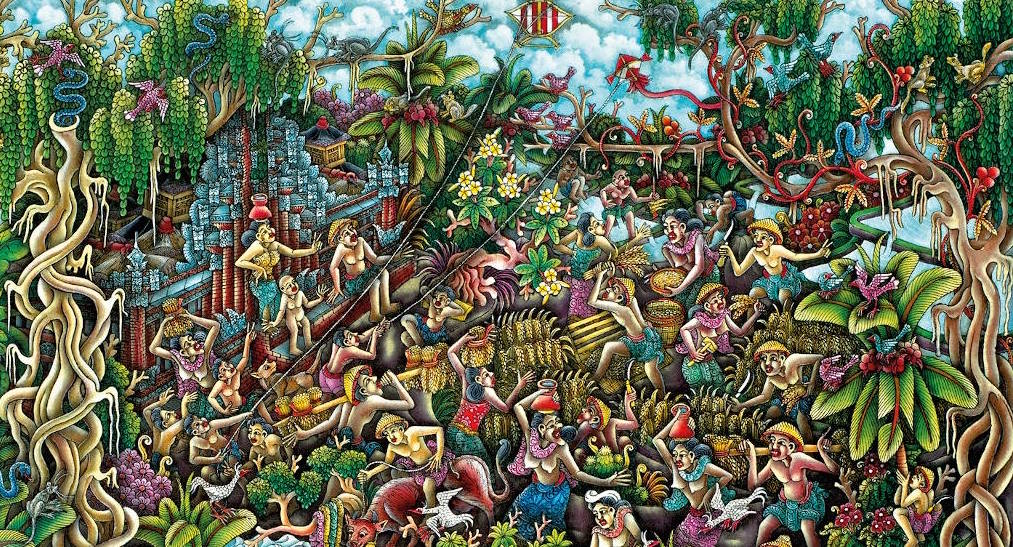
Images of Industriouness in Bali’s Batuan Paintings
This month’s painting is a very large work on canvas – 200 cm x 125 cm – by Ida Bagus (IB) Putu Padma. The image to the right is just a detail of the entire painting. The artist who created this vibrant canvas is a member of a family of well known painters. His grandfather
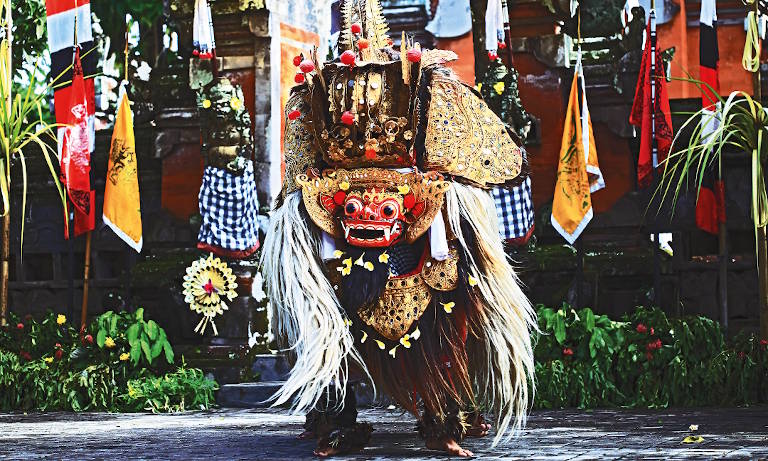
The Philosophy of the Barong Dance
The Balinese believe that we were born with suka duka lara pati, which means that in life we go through happiness and sadness, and at the end death is absolute. This duality of life is like two sides of a coin, they are inseparable. There is also a strong belief that light will eventually come
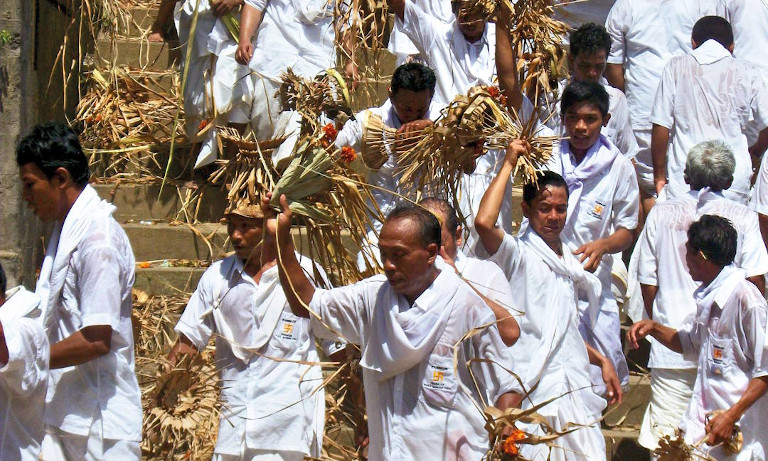
Complexities of the Banjar Community in the Modern World
Massive development has in many ways changed the landscape of Bali from being the home to an agricultural society to a now bustling tourism industry. The establishment of posh restaurants, luxury resorts, and glittering night clubs have led to many mistaking Bali as Indonesia’s capital of hedonism, not Hinduism. But if you look past the

